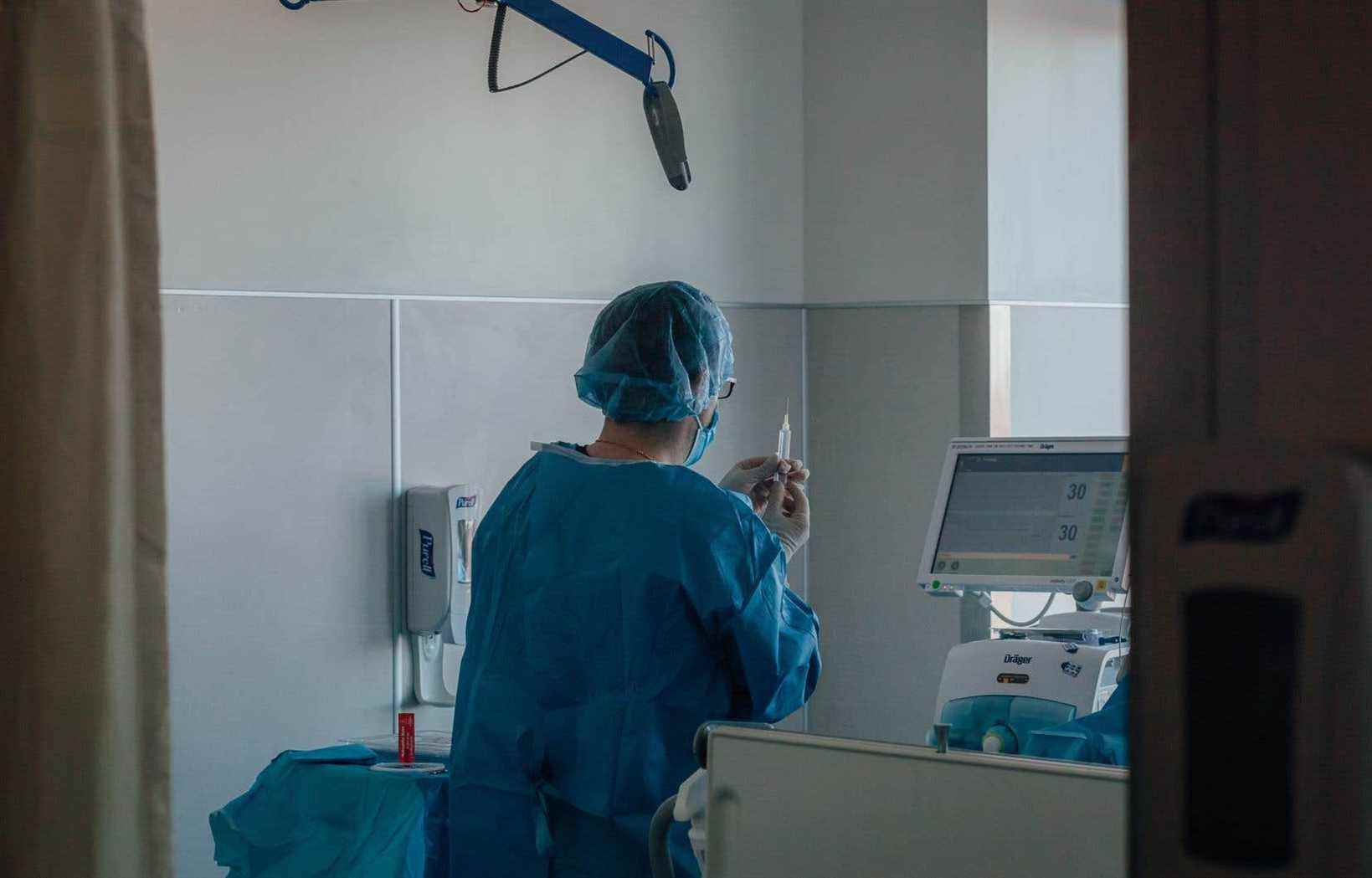Non-emergency operations are suspended as of Wednesday and for at least 21 days in Ontario hospitals under a directive announced Monday by the Ford government. The province hopes to free up beds to treat patients with COVID-19, at a time when the number of new cases is increasing dramatically.
In just one week, the number of COVID-19-related hospitalizations in Ontario soared 163%, from 491 to 1,290 according to the government tally. Province-wide, nearly 73% of intensive care beds are occupied, the latest data from the Ontario Hospital Association shows. The number of employees available to care for patients is decreasing day by day.
“We have a number of resources that will probably decrease over the next few weeks, as we approach the peak of the wave. We are going to be more and more restricted, and more and more sorting will have to be done ”, evaluates the DD Julie Hallet, surgeon at Sunnybrook Hospital in Toronto. She estimates that surgical activities will not be able to resume at their usual pace in three weeks.
Ontario Health, responsible for coordinating the provincial health care system, estimates that between 8,000 and 10,000 surgeries could be postponed each week because of the new directive, the Globe and Mail agency president and CEO Matt Anderson.
Different measures depending on the hospital
Hospitals will respond to the provincial guideline differently depending on their resources, according to Dr.D Hallet. At Sunnybrook Hospital, for example, urgent operations on life-threatening patients within the next 30 days in the absence of a medical procedure will be prioritized, meaning that some urgent procedures may still be postponed. “I have colleagues in other hospitals for whom all of their surgeries have been canceled. The process for them is to submit all of their cases to the department head who will then decide which surgeries will be scheduled, ”she explains.
“Our surgical activity will decrease by 30% based on the new provincial guideline,” writes Shawn Jeffords, spokesperson for University Health in Toronto. At least 500 employees with COVID-19 are missing from the Toronto General and Toronto Western hospitals, which are part of the network. In addition, 700 other employees have been exposed to the virus and are waiting to know if their health unit will allow them to return to work.
As of December 22, health care workers in Ontario who have been in contact with an infected person, but who remain asymptomatic, can return to work, provided they test negative on a rapid test every day, for 10 days. .
Issues in Peel Region
The situation is also critical in the William Osler Health Network, which includes Brampton Civic Hospital and Etobicoke General Hospital. Monday evening, the hospital center decreed a code orange, allowing the hospital center to deploy its resources anywhere in the network. Civic Hospital would have gone from a ratio of four patients per employee at the start of the year to eight per Tuesday, Brampton Mayor Patrick Brown said in an interview with CP24.
” [Il y a] hundreds and hundreds of employees in isolation, since we must protect unvaccinated patients and vulnerable people ”, explained to the Duty the Dr Lawrence Loh, Peel Region Medical Officer of Health. By late Sunday afternoon, at most one ambulance was available in the region’s territory, forcing paramedics to enact a code black – one or less ambulance available in the region. “Black codes now occur every night,” admitted to the Duty the president of the paramedics union, Dave Wakely.
The opinion of Dr Lawrence Loh wanting that the pandemic as we know it since March 2020 would soon be a thing of the past has not changed despite the announcement of new health measures such as the suspension of non-emergency operations and the postponement of the return to school . “By the end of winter, the vast majority of Peel Region residents and Canadians will either be immune, recovered or face life-threatening consequences,” he says.
This story is supported by the Local Journalism Initiative, funded by the Government of Canada.
